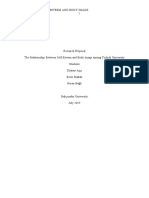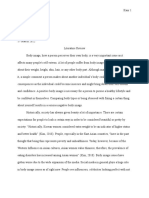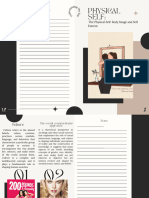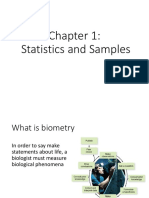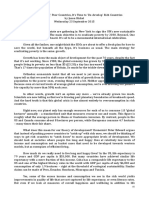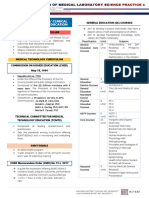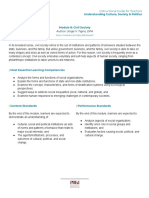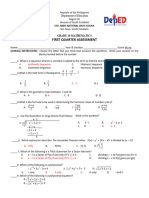0% found this document useful (0 votes)
50 views7 pagesExploring The Role of Family Relationships in Shap
The study investigates how family relationships influence body image satisfaction among adults, utilizing data from 390 participants. Results indicate that family cohesion and expressiveness positively correlate with body image satisfaction, while family conflicts negatively impact it, explaining 53% of the variance in satisfaction levels. The findings highlight the importance of nurturing supportive family environments to promote positive body image perceptions.
Uploaded by
Ranjani vasudevanCopyright
© © All Rights Reserved
We take content rights seriously. If you suspect this is your content, claim it here.
Available Formats
Download as PDF, TXT or read online on Scribd
0% found this document useful (0 votes)
50 views7 pagesExploring The Role of Family Relationships in Shap
The study investigates how family relationships influence body image satisfaction among adults, utilizing data from 390 participants. Results indicate that family cohesion and expressiveness positively correlate with body image satisfaction, while family conflicts negatively impact it, explaining 53% of the variance in satisfaction levels. The findings highlight the importance of nurturing supportive family environments to promote positive body image perceptions.
Uploaded by
Ranjani vasudevanCopyright
© © All Rights Reserved
We take content rights seriously. If you suspect this is your content, claim it here.
Available Formats
Download as PDF, TXT or read online on Scribd
/ 7

